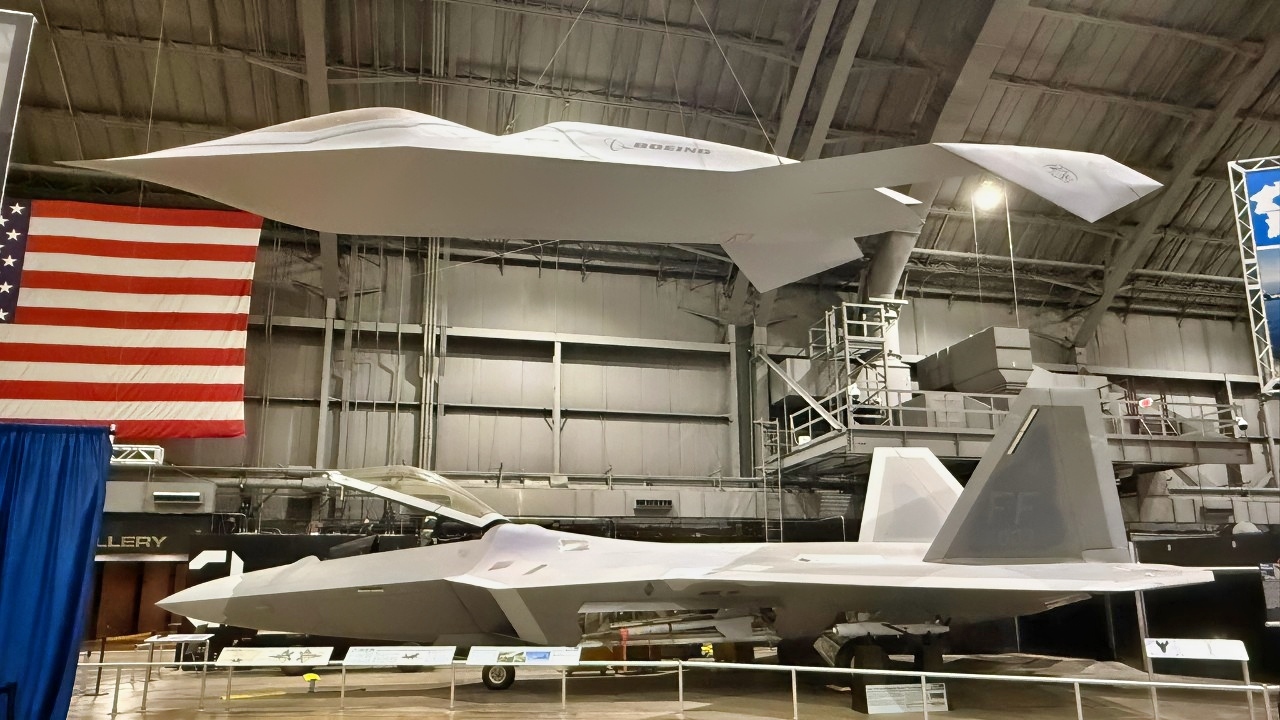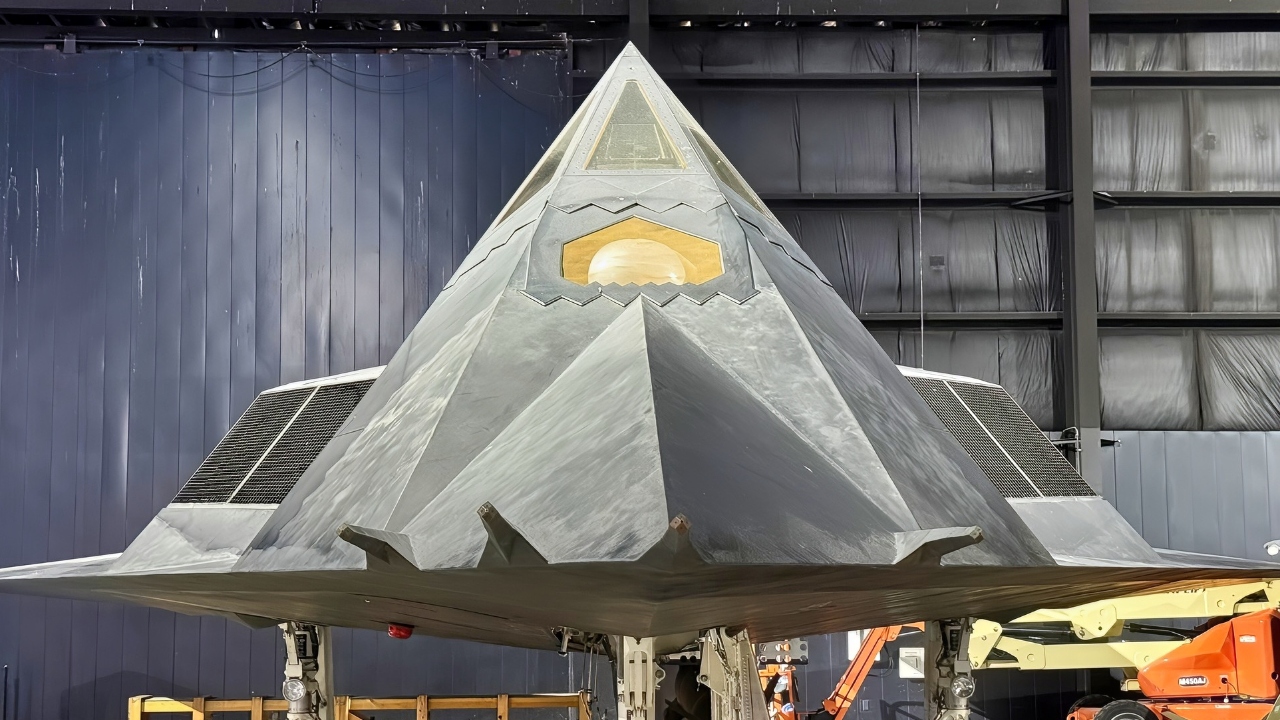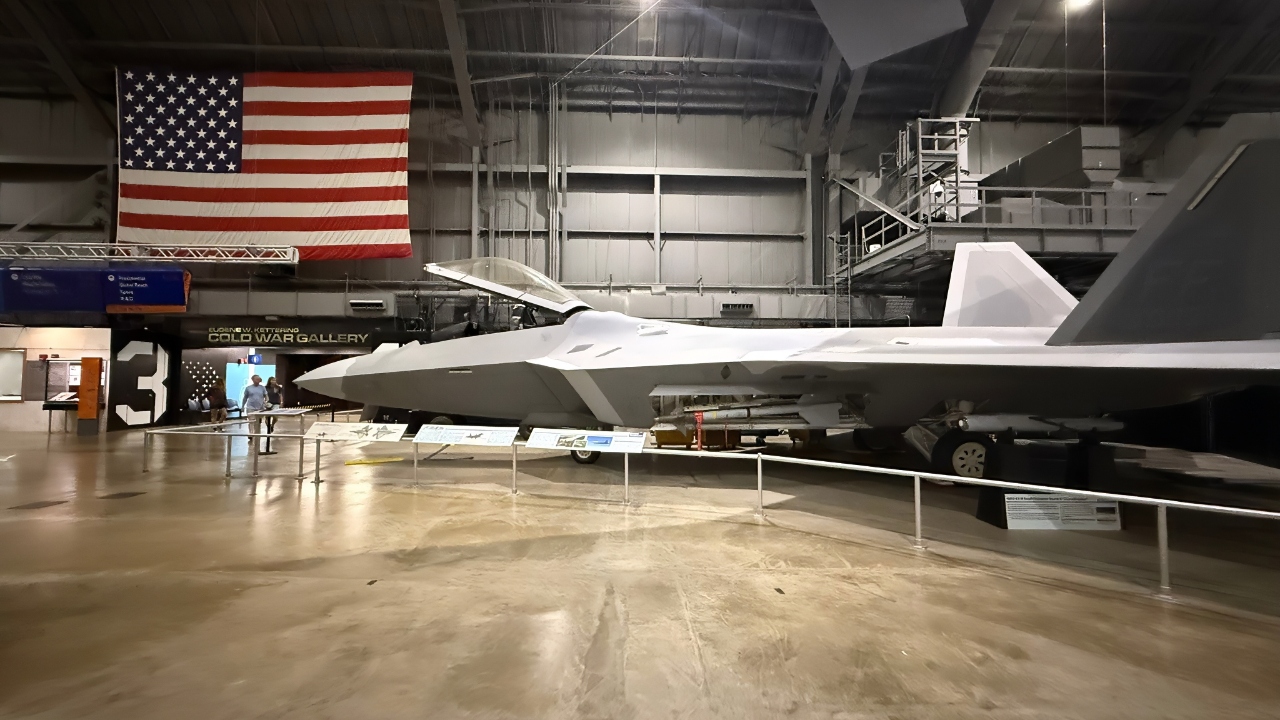Key Points and Summary – The X-44 MANTA was a “radical” 1990s Lockheed Martin concept for a “tailless F-22,” which would have used 3D thrust vectoring instead of conventional stabilizers.
-This design, first proposed in 1999, would have dramatically increased its stealth and boosted its range to a projected 2,000 miles.

YF-118G above and F-22 Raptor Below. Image from National Security Journal.

F-22 Raptor Sitting in AF Museum National Security Journal Photo. Image Credit: Harry J. Kazianis
-Despite its promise, the program was canceled in 2000 due to post-Cold War budget cuts, not just technical hurdles.
-Its “tailless” philosophy was “decades ahead of its time” and now forms the basis for the 6th-gen F-47 NGAD, suggesting the U.S. “could have had a 6th-generation” jet decades ago.\
The X-44 MANATA Story
The late 90s and early 2000s were a time of experimentation and innovation in the American aerospace industry.
Much as the emergence of supersonic technology introduced a whole new world of possibilities, stealth technology did the same.
Many ideas were tested, but very few concepts made it past the conceptual stage.
One such project was the X-44 MANTA (Multi-Axis, No-Tail Aircraft). This tech demonstrator aircraft was a derivative of the F-22 Raptor and would have been a monumental departure from the original aircraft.
The X-44s Radical Design
By the late 1990s, stealth technology had matured through aircraft such as the F-117 Nighthawk and B-2 Spirit, and digital flight control systems were becoming increasingly sophisticated.

F-117 Nighthawk July 2025 National Security Journal Image HD. Photo by Harry J. Kazianis.

F-117 Nighthawk National Security Journal Photo July 2025
Yet advanced fighters like the F-22 Raptor retained large vertical and horizontal stabilizers, components that increased radar visibility and aerodynamic drag. NASA and the U.S. Air Force posed a bold question: could thrust vectoring alone replace conventional control surfaces?
If successful, the aircraft would have had a lower radar cross-section, reduced drag, increased internal fuel capacity, and simplified mechanical systems. Lockheed Martin’s Skunk Works division took up the challenge, leveraging the F-22’s core architecture but stripping away its tail surfaces to create a tailless delta-wing design.
The concept was officially designated X-44 MANTA in 1999, with plans for a prototype to begin flight testing by 2007. However, funding was cut in 2000, and the project never advanced beyond the design stage.
The Stealth Fighter the Air Force Never Got
The X-44 was conceived as a tailless delta-wing aircraft with no vertical stabilizers, rudders, or elevators.
Instead, it relied on full three-dimensional thrust vectoring to achieve pitch, yaw, and roll control.
This approach represented a radical departure from conventional aerodynamics, requiring advanced flight control software to manage complex dynamics without the redundancy provided by traditional surfaces.
The design featured a broad delta wing that provided increased internal fuel capacity, extending operational range beyond that of the F-22.
The aircraft would reuse Pratt & Whitney F119 engines, similar to those on the F-22, but with modified nozzles capable of multi-axis thrust vectoring.

F-22 Resting at U.S. Air Force Museum. Image Credit: National Security Journal.
Eliminating vertical tails significantly reduces the radar signature, complementing stealth shaping across the airframe. The absence of traditional control surfaces also promised reduced mechanical complexity and potentially lower maintenance costs.
Although the X-44 never advanced beyond the conceptual stage, estimates suggested impressive capabilities. Engineers believed the aircraft could reach speeds up to Mach 2, comparable to the F-22, and operate at altitudes around 49,000 feet.
Its range was projected to be nearly 2,000 miles, thanks to the larger delta wing and increased fuel volume.
Armament would have been housed in internal weapons bays for missiles such as AIM-120 AMRAAM and AIM-9 Sidewinder, preserving stealth characteristics. The design also promised agility at extreme angles of attack, leveraging thrust vectoring for maneuvers that conventional fighters could not match.
Why the X-44 MANTA Never Left the Drawing Board
Despite its promise, the X-44 faced significant hurdles. Complete reliance on thrust vectoring demanded unprecedented software reliability and redundancy.
In the late 1990s, these systems were not mature enough to guarantee safe operation. Removing tail surfaces introduced inherent instability, which thrust vectoring could only partially compensate for.

X-44 MANTA concept art.
Furthermore, the complexity of integrating propulsion and control systems into a single architecture posed engineering challenges that were difficult to overcome with the technology of the time.
All of the engineering challenges could have been easily overcome, but what the engineers and Lockheed could not overcome was the budget cuts.
With the Soviet Union gone, the U.S. no longer faced a near-peer threat.
This meant that advanced fighter concepts were no longer a high priority for the Department of Defense. Post-Cold War defense cuts and shifting priorities toward multi-role platforms, such as the F-35, led to the program’s cancellation in 2000.
The MANTA’s Legacy
Although the X-44 never flew, some speculate that the experience on the project may have influenced subsequent work.
The sixth-generation Next Generation Air Dominance (NGAD) program may have incorporated many principles pioneered by the X-44. Early NGAD renderings depict blended-wing-body configurations with no vertical stabilizers, echoing the MANTA’s stealth-centric philosophy. Integration of propulsion and control systems remains a cornerstone of next-generation agility.
The X-44’s emphasis on minimizing radar signature from all angles is now standard in future fighter concepts. In many ways, the X-44 was decades ahead of its time, laying the groundwork for tailless stealth aircraft that combine broadband stealth with extreme maneuverability.
While the project ended in the early 2000s, the designation appeared once again in another Lockheed project: the X-44A Manta.
Developed by Lockheed Martin’s Skunkworks division in the early years, both Mantas were likely developed side by side. Unlike the X-44, the X-44A was designed as a tech demonstrator to test the feasibility of unmanned stealth UAVs.
The small aircraft featured a blended-wing design very similar to that of the B-21 Raider. Despite the two programs sharing the identical designation, it is unlikely they overlapped. Naming similarities between the two is coincidental.
About the Author: Isaac Seitz
Isaac Seitz, a Defense Columnist, graduated from Patrick Henry College’s Strategic Intelligence and National Security program. He has also studied Russian at Middlebury Language Schools and has worked as an intelligence Analyst in the private sector.
More Military
A ‘Small War’ Against Venezuela Is a Really Big Mistake
The Air Force’s Mach 2 F-15C/D Fighter Isn’t Going Anywhere
The United Kingdom Has a Message for the F-35 Stealth Fighter











bert33
November 7, 2025 at 5:24 pm
Hypersonic missiles big-dollar unmanned long-range go-fast=obsolete fighter jets.